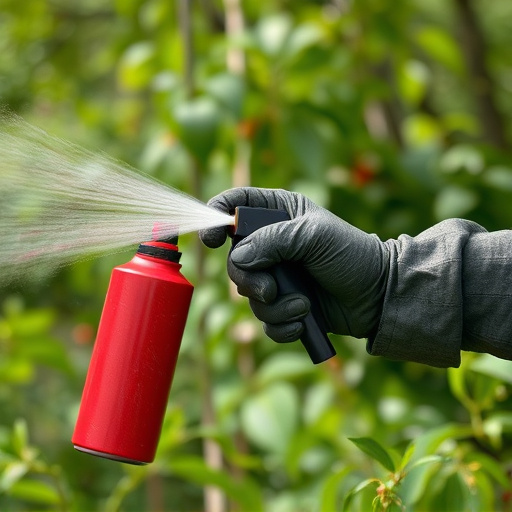Pepper spray, a non-lethal riot control agent using capsaicin from chili peppers, requires understanding wind direction for safe and effective deployment by law enforcement officers. By strategically positioning themselves and aiming at sensitive areas like the face, eyes, and nose, while considering wind direction, officers can minimize off-target effects, keep civilians safe, and maintain control over rioters, making Pepper Spray Wind Direction Tips a crucial tool in crowd control and public safety maintenance.
“In the realm of law enforcement, riot control agents like pepper spray are indispensable tools for managing chaotic situations. Understanding the basics of pepper spray and its role is crucial. This article delves into ‘Pepper Spray Wind Direction Tips’, offering strategic insights on effective deployment. We explore best practices and legal considerations to ensure responsible use, providing a comprehensive guide for law enforcement professionals navigating these powerful agents in high-pressure environments.”
- Understanding Pepper Spray: The Basics and Its Role in Law Enforcement
- Wind Direction Tips: Navigating the Use of Riot Control Agents Effectively
- Best Practices and Legal Considerations for Pepper Spray in Law Enforcement Operations
Understanding Pepper Spray: The Basics and Its Role in Law Enforcement
Pepper spray, a riot control agent, is a non-lethal weapon widely used by law enforcement agencies worldwide. At its core, it’s a liquid aerosol that contains capsaicin, the active ingredient derived from chili peppers. When deployed, the spray creates a temporary but intense irritation to eyes and respiratory systems, incapacitating individuals without causing permanent harm. This makes pepper spray a valuable tool in crowd control situations, allowing officers to subdue and secure suspects or disrupt violent gatherings.
Effective use of pepper spray requires understanding its dynamics, including the wind direction tips. The spray travels in a straight line, so officers must consider the wind’s direction to ensure it doesn’t blow back towards them or other bystanders. Proper application involves aiming at the face, eyes, and nose—sensitive areas that will quickly disable an individual. By grasping these basics and staying alert to environmental factors like wind, law enforcement personnel can leverage pepper spray as a crucial tool in maintaining public safety while minimizing harm.
Wind Direction Tips: Navigating the Use of Riot Control Agents Effectively
When deploying riot control agents, such as pepper spray, understanding wind direction is crucial for effective navigation and minimizing off-target effects. The key is to always consider the breeze’s potential path, especially in open areas or urban landscapes where it can quickly spread. By anticipating the wind’s movement, officers can strategically position themselves and suspects, ensuring the agent reaches its intended target without causing harm to bystanders.
For instance, if using pepper spray, blowing the breeze away from civilians and towards the rioters is a prudent tactic. This simple adjustment in deployment angle can significantly reduce exposure for innocent people while maintaining control. Remember, in the heat of a volatile situation, these Pepper Spray Wind Direction Tips can be a game-changer, allowing law enforcement to de-escalate conflicts swiftly and safely.
Best Practices and Legal Considerations for Pepper Spray in Law Enforcement Operations
In law enforcement operations, pepper spray is a powerful tool for riot control and crowd management. However, its effective use requires adherence to best practices and a thorough understanding of legal considerations. One critical factor to manage when deploying pepper spray is wind direction. Officers must consider the potential path of the spray, ensuring it doesn’t inadvertently affect innocent bystanders or colleagues. Simple tips like observing the wind’s current and aiming away from crowds can significantly minimize collateral damage.
Additionally, legal constraints dictate the specific circumstances under which pepper spray can be used. These restrictions vary by jurisdiction but generally include requirements for reasonable force and proportionality. Officers must receive adequate training to recognize when and how to deploy pepper spray safely and legally, balancing public safety with individual rights. Such training should cover not only practical application techniques but also de-escalation strategies to avoid unnecessary use of force.
Pepper spray, as a riot control agent, plays a crucial role in law enforcement operations. Understanding its basics, effectively navigating wind direction during its use, and adhering to best practices along with legal considerations are essential for ensuring its safe and efficient deployment. By mastering these aspects, law enforcement officials can maintain public safety while minimizing the impact on those involved. Effective utilization of pepper spray, guided by thoughtful wind direction tips, is a powerful tool in managing chaotic situations, making it an indispensable asset for modern policing strategies.
